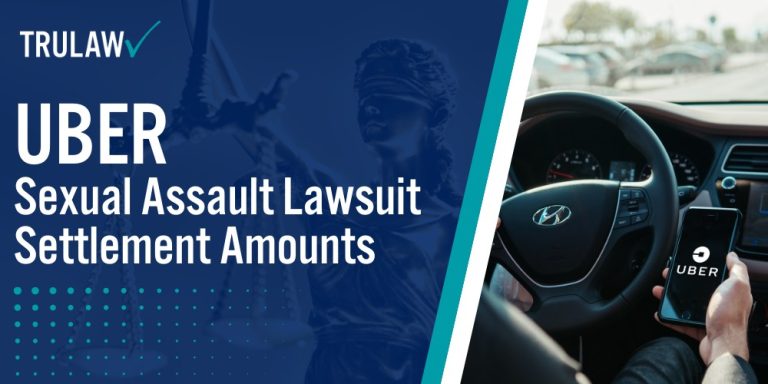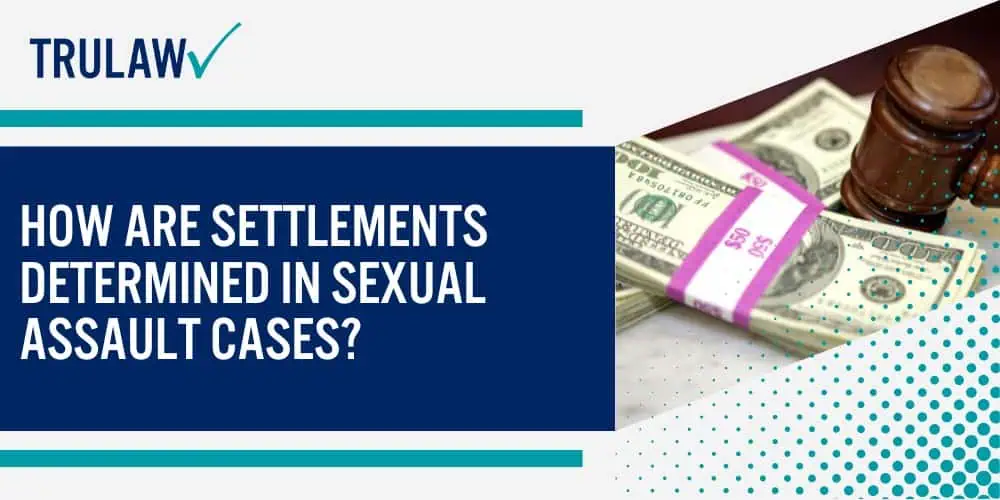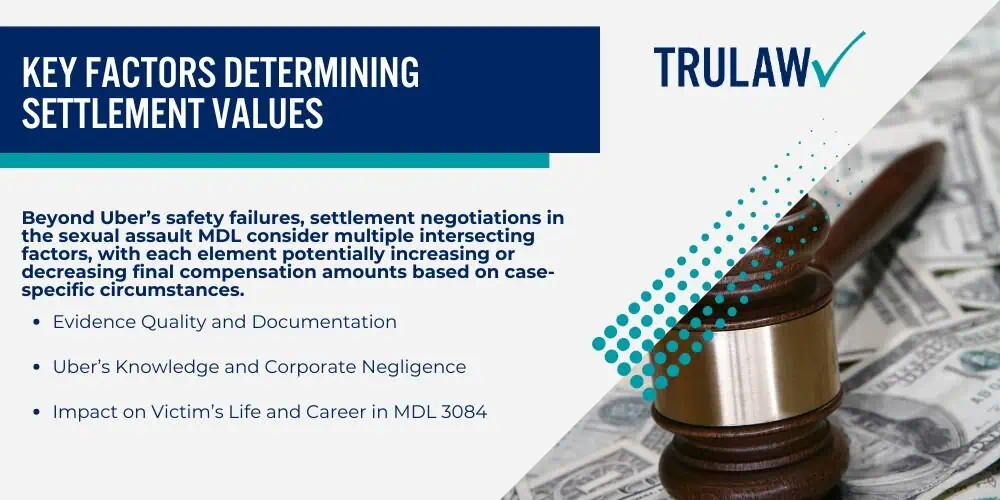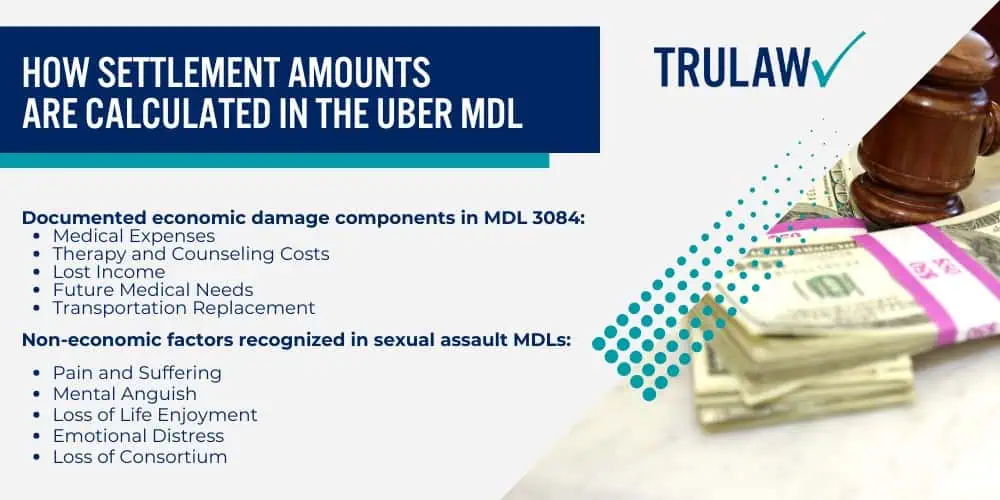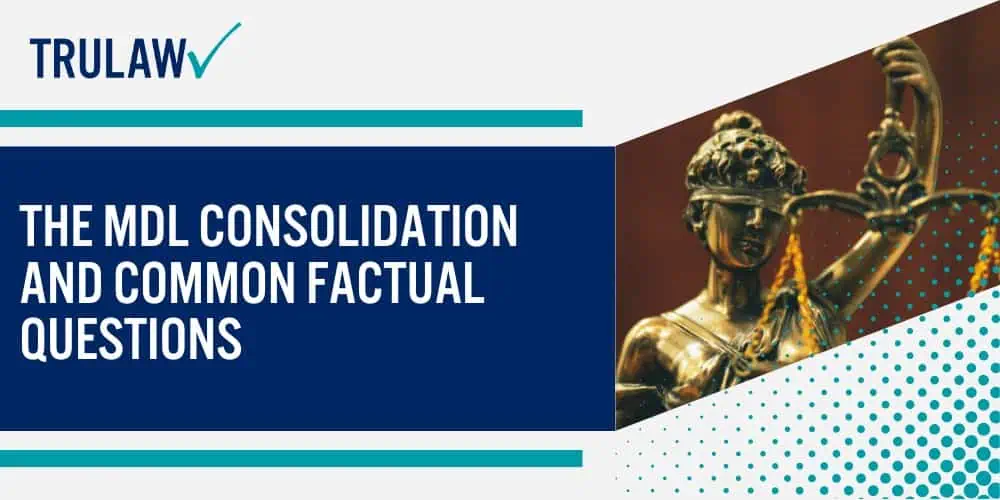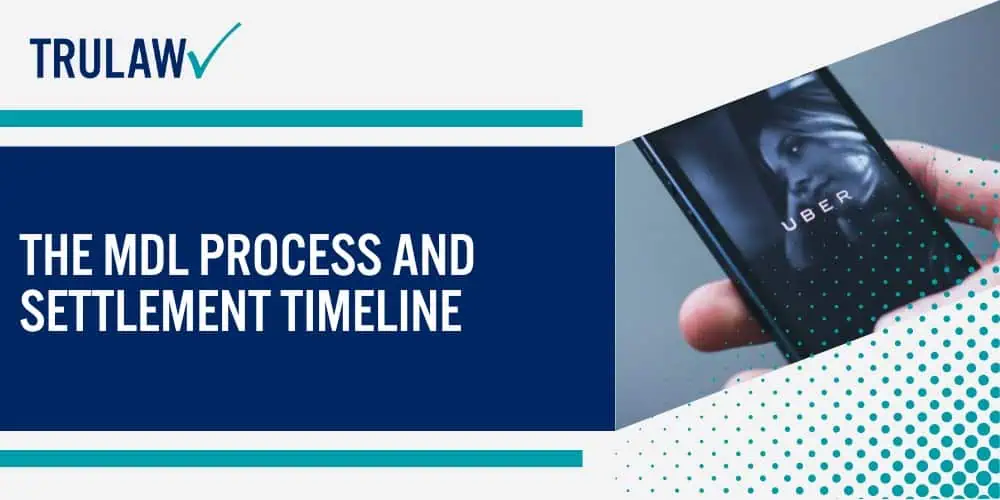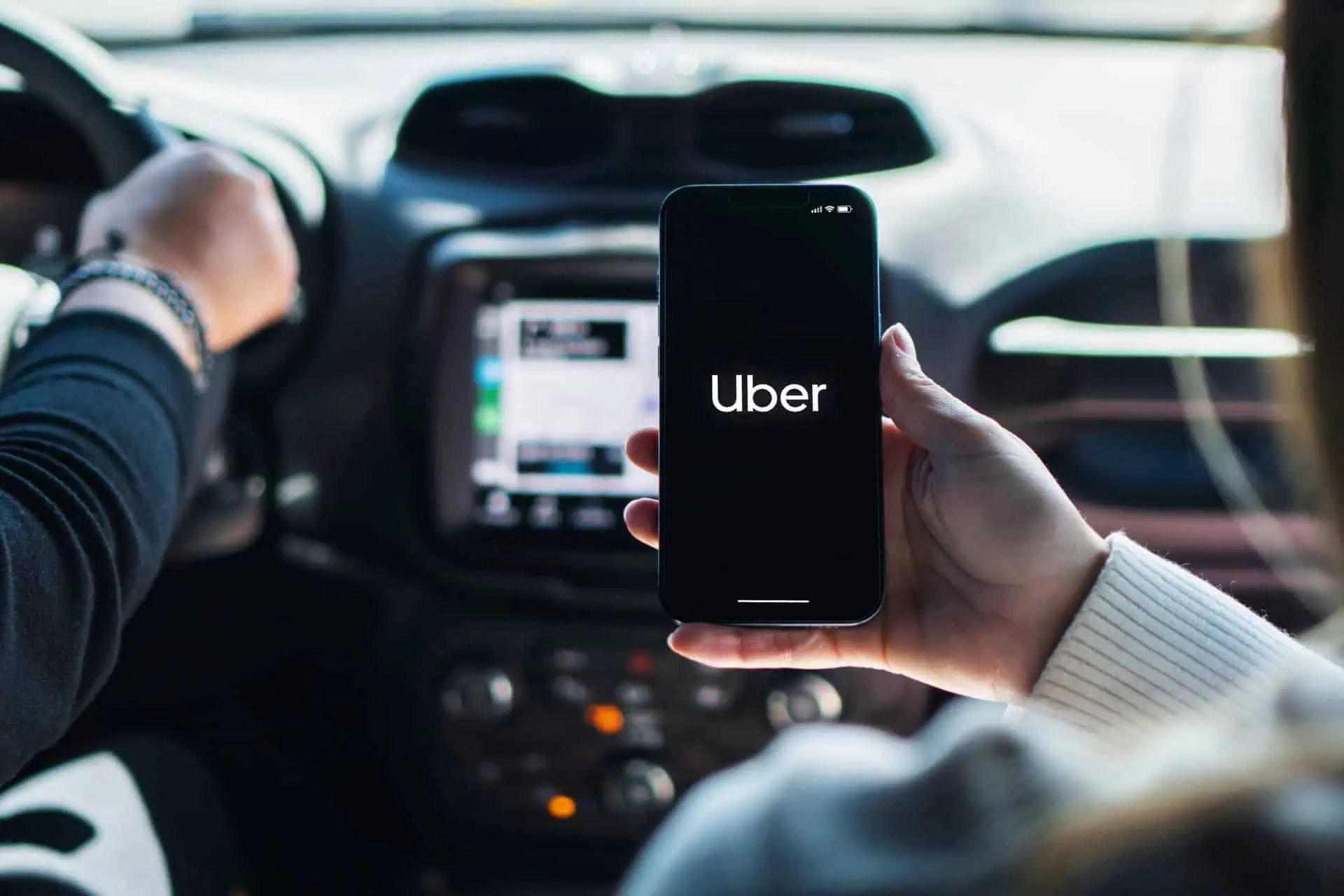Settlement valuations in the Uber MDL reflect the severity of assault, strength of evidence, and degree of corporate negligence, with preliminary frameworks establishing three distinct compensation tiers based on similar mass tort precedents and rideshare litigation outcomes.
Tier 1: Severe Assault Cases ($300,000 to Over $1 Million)
The highest settlement tier encompasses cases involving forcible rape, sexual penetration with violence, or assaults resulting in permanent physical injury or diagnosed PTSD requiring long-term psychiatric treatment.
These cases command premium valuations when coupled with evidence that Uber ignored prior driver complaints, failed background checks revealing criminal history, or allowed drivers with multiple allegations to continue operating on the platform.
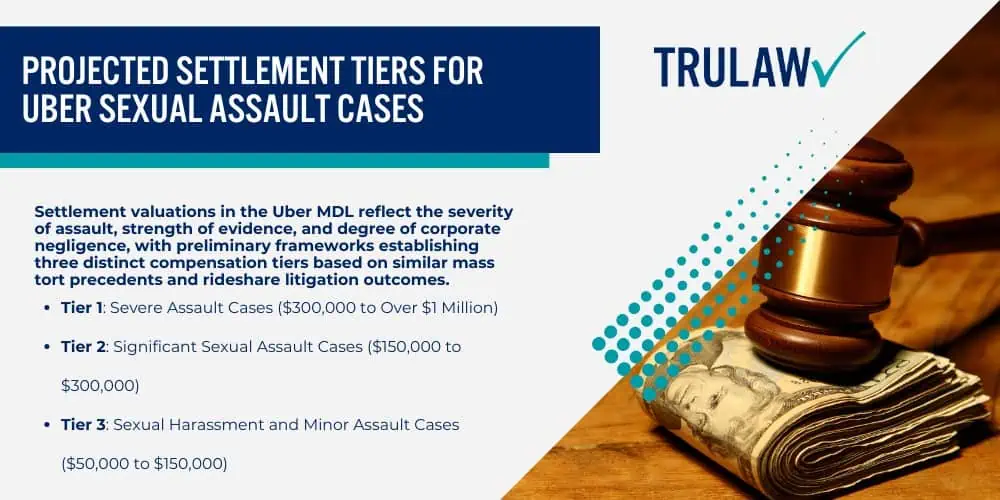
Factors that may determine settlement values for Tier 1 cases include, but are not limited to:
- Forcible Sexual Penetration: Cases involving completed rape or attempted penetration with physical force
- Documented Prior Complaints: Evidence of previous passenger reports about the same driver that Uber failed to investigate
- Aggravating Circumstances: Drugging, kidnapping, false imprisonment, or weapon involvement during assault
- Severe Psychological Impact: Clinical PTSD diagnosis, hospitalization for trauma, inability to work
- Serial Predator Cases: Drivers who assaulted multiple passengers demonstrating systemic failures
Settlement negotiations for these severe cases often exceed seven figures when medical documentation establishes ongoing treatment needs and expert testimony quantifies lifetime impacts on earning capacity and quality of life.
Tier 2: Significant Sexual Assault Cases ($150,000 to $300,000)
Mid-tier settlements apply to cases involving non-consensual touching of intimate body parts, attempted sexual penetration without completion, or severe sexual harassment creating lasting emotional trauma.
These cases typically involve clear misconduct but may lack the extreme violence or comprehensive medical documentation of Tier 1 claims, though they still demonstrate Uber’s failure to protect passengers from foreseeable harm.
Factors that may determine settlement values for Tier 2 cases include, but are not limited to:
- Non-Consensual Sexual Contact: Groping, forced kissing, or unwanted touching of sexual body parts
- Attempted But Prevented Assault: Cases where victims escaped before penetration occurred
- Moderate Psychological Harm: Anxiety, depression, or trauma responses requiring therapy but not hospitalization
- Some Corroborating Evidence: Ride logs, text messages, or partial witness testimony
- Single Incident Without Aggravating Factors: Isolated assault without weapons or drugging
Settlement values within this tier vary based on documentation quality, with contemporaneous police reports and immediate medical examinations strengthening negotiating positions.
Tier 3: Sexual Harassment and Minor Assault Cases ($50,000 to $150,000)
Lower-tier settlements address sexual harassment, inappropriate comments, indecent exposure, or brief unwanted touching that caused emotional distress without lasting physical or psychological injury.
While these incidents represent serious violations of passenger safety and trust, they typically resolve for lower amounts absent aggravating factors or evidence of Uber’s specific knowledge of driver propensities.
Factors that may determine settlement values for Tier 3 cases include, but are not limited to:
- Verbal Sexual Harassment: Explicit propositions, sexual comments, or threats without physical contact
- Brief Inappropriate Touching: Unwanted contact lasting seconds rather than sustained assault
- Indecent Exposure: Drivers exposing themselves or engaging in sexual acts while driving
- Stalking or Unwanted Contact: Post-ride harassment through saved passenger information
- Witnessed But Prevented Incidents: Attempted misconduct stopped by intervention
Even these lower-tier cases merit compensation for violating passenger safety expectations and causing preventable trauma through inadequate driver screening.
